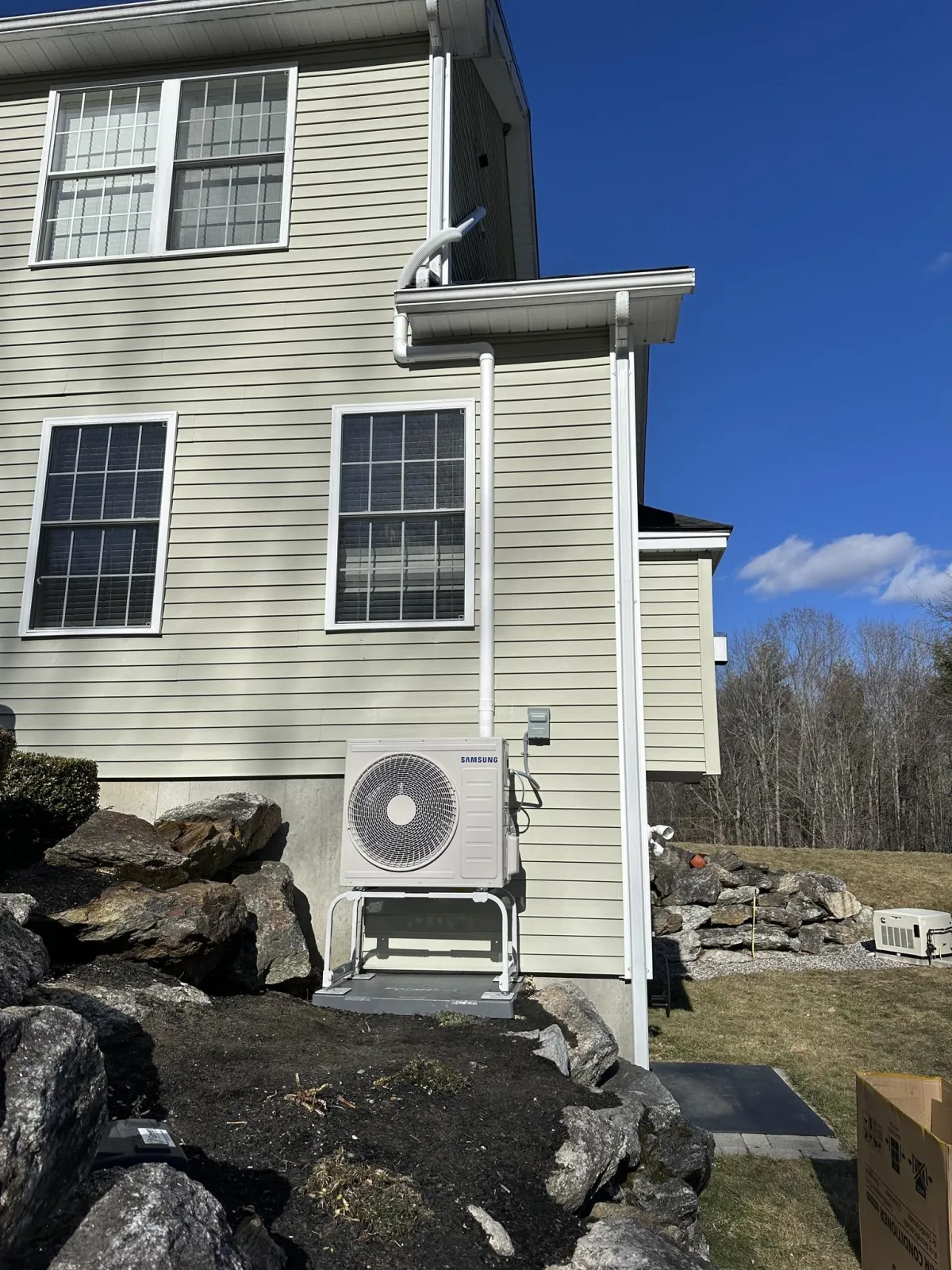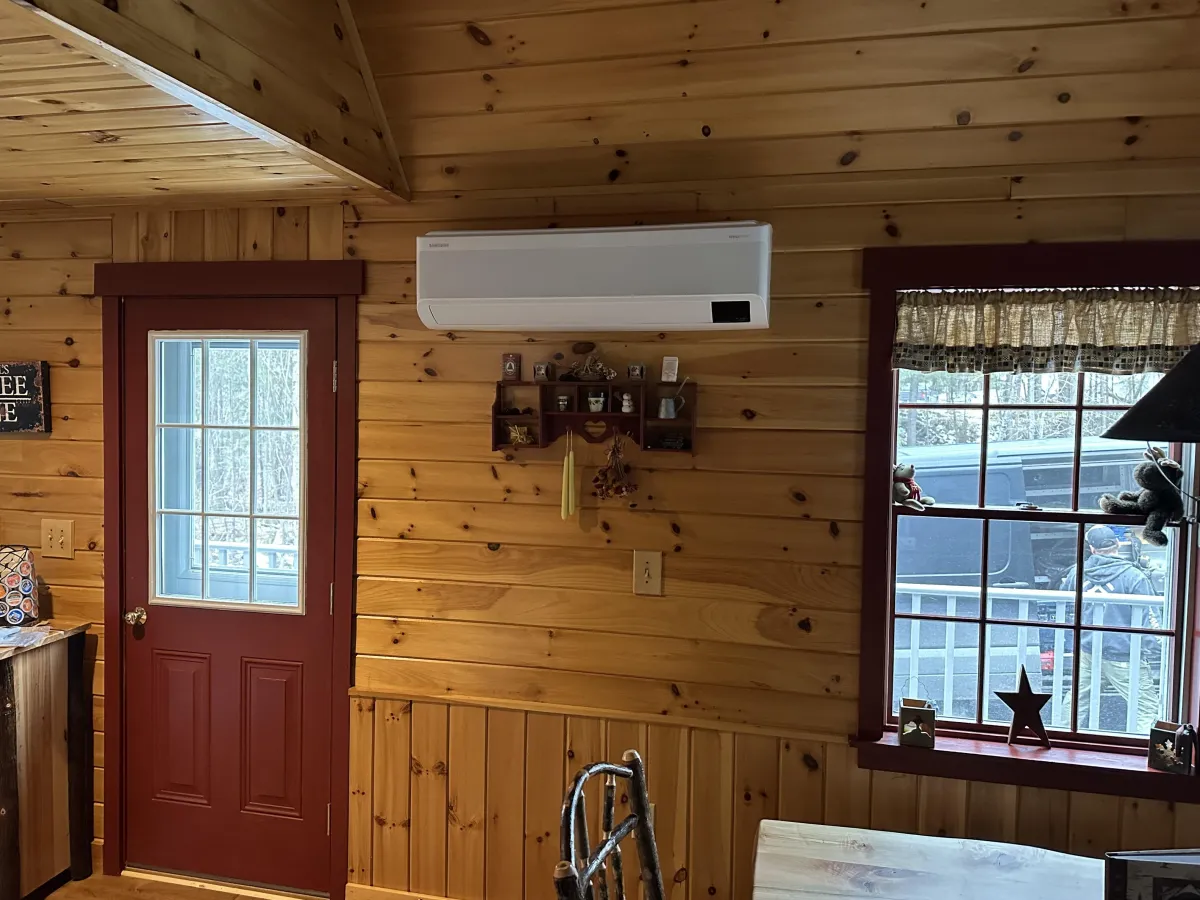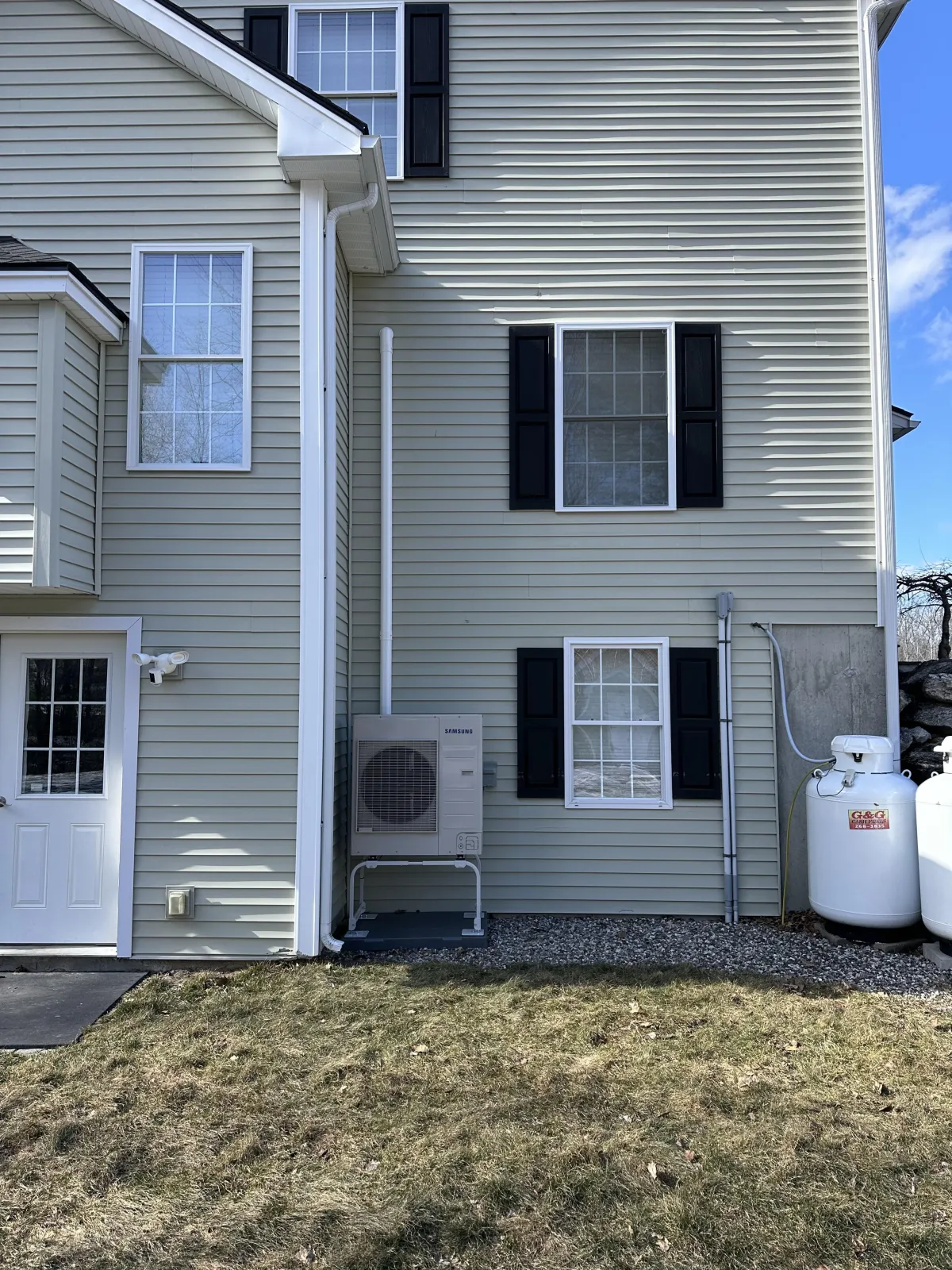Electric Furnaces In Maine

Electric Furnaces Installation and Maintenance
Electric furnaces provide a highly efficient heating solution tailored for Maine's demanding winters, where sub-zero temperatures and high heating demands necessitate systems that maximize energy conversion while minimizing operational costs. With AFUE ratings reaching 100%, these units convert virtually all electrical input into usable heat, outperforming gas alternatives in regions like Maine where electricity rates are competitive and natural gas infrastructure may be limited, potentially yielding 20-30% savings when integrated with modern zoning and variable-speed blowers.
At Russell's HVAC, we emphasize precise installation and rigorous maintenance to harness this efficiency, ensuring clean, emission-free operation that aligns with Maine's stringent environmental standards and supports sustainable home heating. This guide outlines essential preparation, installation procedures, maintenance protocols, and troubleshooting strategies, empowering Maine homeowners with the knowledge to achieve optimal performance and longevity—typically 15 to 20 years—from their electric furnace systems.
Understanding Electric Furnaces
To appreciate the nuances of installation and maintenance, a foundational understanding of electric furnace mechanics is essential. An electric furnace comprises key components: heating elements (coiled nichrome wires that glow when energized), a blower motor for air circulation, a control board for sequencing operations, and safety devices such as limit switches and thermal fuses. Power from the electrical service panel activates the elements via sequencers, which stagger activation to mitigate inrush current and ensure even heating. Air is drawn through a filter, heated as it passes over the elements, and distributed via ductwork.
The advantages of electric furnaces are manifold. They produce no emissions, aligning with stringent indoor air quality standards and reducing carbon footprints. Installation is straightforward, often requiring no flue or venting, which lowers upfront costs compared to gas alternatives. Reliability is another hallmark; with fewer moving parts, these units experience less frequent breakdowns. Energy efficiency is enhanced when paired with zoning systems or variable-speed blowers, potentially yielding 20-30% savings on heating bills.
Nevertheless, considerations exist. Electric furnaces demand robust electrical infrastructure, with capacities ranging from 10 to 25 kilowatts, translating to 40-100 amps at 240 volts. In colder climates, operating costs may exceed those of gas systems due to electricity rates. Sizing is critical: an undersized unit strains to maintain temperatures, while an oversized one cycles inefficiently, exacerbating wear.
At Russell's HVAC, we advocate for Manual J load calculations to determine precise BTU requirements, factoring in home size, insulation, and climate. This approach, endorsed by the Air Conditioning Contractors of America (ACCA), prevents common pitfalls. Integration with smart thermostats further optimizes performance, enabling remote adjustments and predictive maintenance alerts. By selecting high-quality units from reputable manufacturers, our installations deliver consistent warmth and durability, underscoring electric furnaces as a prudent choice for modern heating needs.



Preparation for Installaion
Thorough preparation forms the cornerstone of a successful electric furnace installation, mitigating risks and ensuring compliance with National Electrical Code (NEC) and local building regulations. Russell's HVAC commences every project with a site assessment, evaluating structural, electrical, and airflow parameters to customize the approach.
Begin with a Manual J load calculation, a systematic evaluation of heating demands. This involves measuring square footage, assessing insulation R-values, analyzing window efficiency, and accounting for occupancy and orientation. For a typical 2,000-square-foot home in a moderate climate, requirements might range from 40,000 to 60,000 BTUs. Professionals at Russell's HVAC utilize certified software to generate reports, preventing oversizing that leads to short-cycling or undersizing that causes inadequate heat.
Electrical readiness is non-negotiable. Inspect the service panel for capacity; most electric furnaces require 60-120 amps on a dedicated circuit. Homes with 100-amp panels may necessitate upgrades to 200 amps, involving panel replacement and conduit installation. Verify wire gauge—typically 6 AWG for 60 amps—copper preferred for conductivity—and ensure grounding conforms to NEC Article 250. A licensed electrician, coordinated through Russell's HVAC, performs these upgrades to avert fire hazards.
Site selection demands precision. Position the furnace in a dry, accessible indoor space such as a basement or utility room, maintaining 30 inches of front clearance for service and 6 inches from combustible materials. Proximity to existing ductwork minimizes fabrication, but evaluate duct integrity: leaks can dissipate 20-30% of heated air, inflating costs. Seal joints with mastic or foil tape and insulate unconditioned spaces.
Pre-installation checklists include obtaining permits, clearing workspaces, and confirming accessory compatibility, such as 24-volt thermostats or condensate drains for hybrid systems. Russell's HVAC advises budgeting for comprehensive projects, inclusive of labor and materials. Homeowners should vacate during work to ensure safety. This meticulous preparation, executed by our team, guarantees a seamless transition to efficient heating.
Routine Maintenance
Sustained performance of an electric furnace hinges on a structured maintenance regimen, averting efficiency losses and extending service life. Russell's HVAC endorses a blend of homeowner tasks and annual professional inspections to uphold system integrity.
Commence with air filter replacement every 1-3 months, contingent on usage and environmental factors. Clogged filters impede airflow, straining the blower and reducing heat output by up to 15%. Select pleated filters with MERV 8-13 ratings for optimal filtration without excessive resistance. Vacuum the blower compartment biannually, dislodging dust that accumulates on coils and motors.
Lubricate blower bearings quarterly if not sealed, using SAE 20 non-detergent oil to minimize friction and noise. Inspect electrical connections annually for looseness or corrosion, tightening terminals to prevent arcing. Clean the heat exchanger or elements gently with a soft brush, avoiding abrasives that compromise integrity.
Seasonal preparations are advisable: prior to heating season, test the thermostat calibration and verify limit switch functionality. Monitor energy consumption; deviations signal inefficiencies warranting attention. Integrate programmable thermostats to modulate temperatures, conserving 10-20% energy.
For comprehensive care, schedule Russell's HVAC annual tune-ups, encompassing combustion analysis (though minimal for electrics), duct leakage tests, and control board diagnostics. Our maintenance plans, starting at affordable rates, include priority service and discounts on repairs. Adhering to these protocols not only enhances efficiency but also mitigates risks like overheating, ensuring reliable warmth.
Troubleshooting Common Issues
Electric furnaces, while robust, may encounter operational anomalies. Systematic troubleshooting, as outlined by Russell's HVAC, facilitates swift resolution while prioritizing safety. Always de-energize the unit before inspections.
No Heat Output
Initiate by confirming power: ascertain the thermostat is set 3-5°F above ambient and in "heat" mode. Inspect for tripped breakers or blown fuses in the furnace panel; reset or replace as needed. A persistent tripping indicates overload—consult a professional. Examine the air filter; a soiled one restricts flow, mimicking heat failure. If unresolved, faulty sequencers or elements may require diagnostic multimeter testing by technicians.
Blower Malfunctions
Should the blower fail to engage, verify thermostat fan setting to "auto." Continuous operation suggests a stuck relay; disengage power and probe contacts. Poor airflow or incessant running often stems from dirty wheels—clean meticulously. Unusual odors, like burning, signal motor bearing failure; immediate shutdown and service are imperative.
Unusual Noises
Banging from access panels denotes loose hardware; tighten bolts securely. Rattling belts, if present, require tension adjustment or replacement. Humming may arise from voltage imbalances—measure with a multimeter. Persistent sounds warrant vibration analysis to preclude component fatigue.
Other Issues
Rising bills without usage spikes imply duct leaks; seal with professionals. Uneven heating points to zoning imbalances or restricted vents—clear obstructions. Burning plastic smells necessitate immediate cessation and inspection for wiring insulation degradation.
When symptoms persist beyond basic checks, engage Russell's HVAC for advanced diagnostics, including thermal imaging and airflow balancing. Early intervention averts cascading failures, preserving system efficacy.
Conclusion
Electric furnaces offer a dependable pathway to comfortable, efficient heating when installed and maintained with precision. This guide from Russell's HVAC illuminates the path from preparation through troubleshooting, empowering informed stewardship. For bespoke installations or service, contact our experts to harness the full potential of your system.
Contact us Today!
Central & Southern Maine
Androscoggin County
Mechanic Falls, ME 04256
Auburn, ME 04210
Poland, ME 04274
Lewiston, ME 04240
Turner, ME 04282
Greene, ME 04236
Lisbon, ME 04250
Sabattus, ME 04280
Durham, ME 04222
Monmouth, ME 04259
Wales, ME 04280
Litchfield, ME 04350
Leeds, ME 04263
Cumberland County
New Gloucester, ME 04260
Raymond, ME 04071
Gray, ME 04039
Casco, ME 04015
Pownal, ME 04069
Windham, ME 04062
Brunswick, ME 04011
Freeport, ME 04032
North Yarmouth, ME 04097
Yarmouth, ME 04096
Cumberland, ME 04021
Standish, ME 04084
Falmouth, ME 04105
Westbrook, ME 04092
Gorham, ME 04038
Portland, ME 04101
South Portland, ME 04106
Scarborough, ME 04074
Oxford County
Hebron, ME 04238
Oxford, ME 04270
Buckfield, ME 04220
Paris, ME 04271
Norway, ME 04268
West Paris, ME 04289
Naples, ME 04055
Sumner, ME 04292
Hartford, ME 04220
Waterford, ME 04088
Bridgton, ME 04009
Harrison, ME 04040
South Paris, ME 04281
Franklin County
Livermore, ME 04253
Livermore Falls, ME 04254
Jay, ME 04239
Kennebec County
Monmouth, ME 04259
Wales, ME 04280
Litchfield, ME 04350
Wayne, ME 04284
Winthrop, ME 04364
Augusta, ME 04330
Manchester, ME 04351
Hallowell, ME 04347
Farmingdale, ME 04344
Gardiner, ME 04345
If you are outside our service area we may provide service for an increased truck-roll fee. We reserve the right to refuse service.

© Russell's HVAC, LLC - 2025 - All Rights Reserved. 81 Main St #105 Auburn ME, 04210